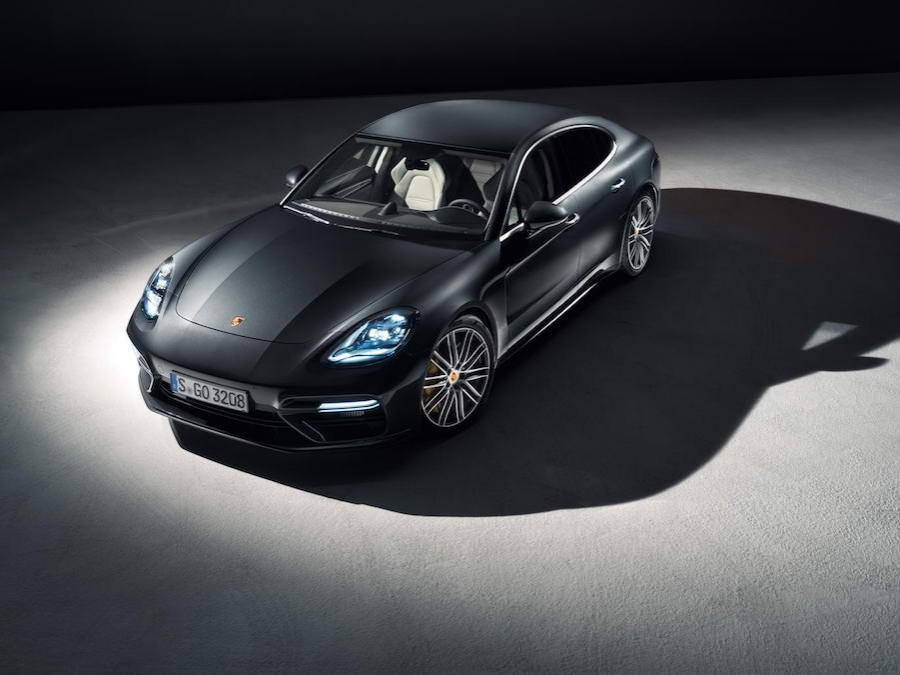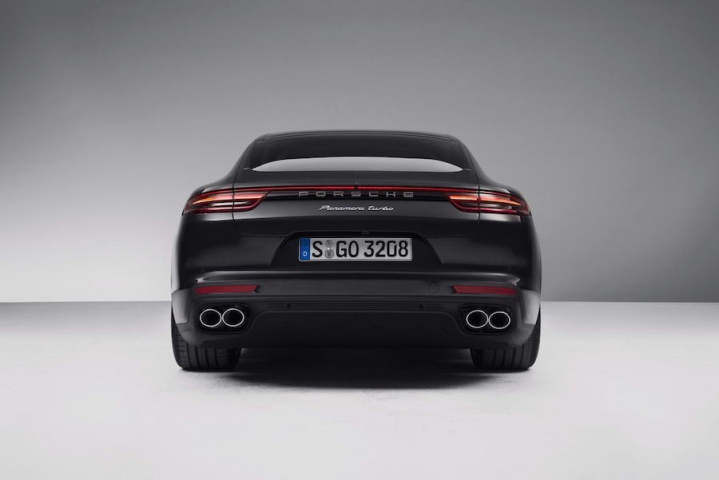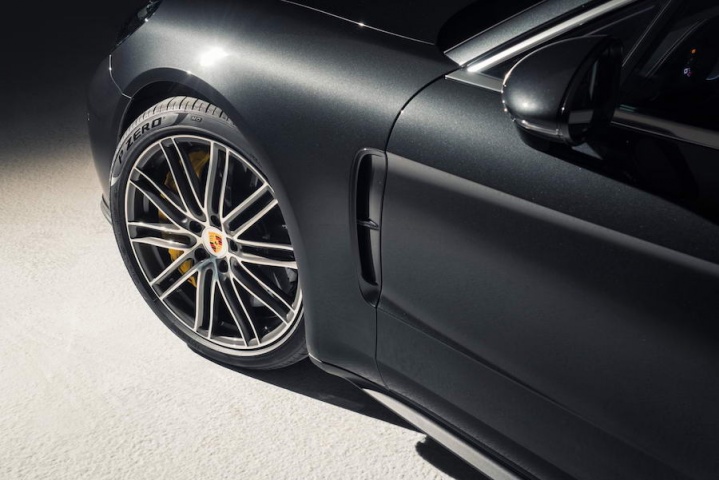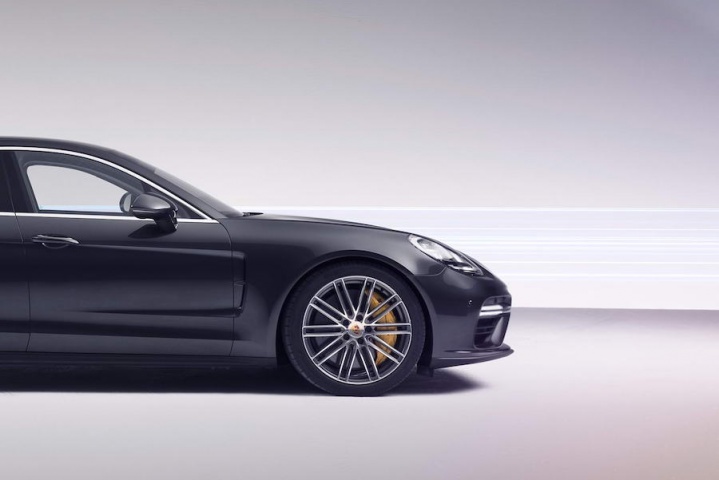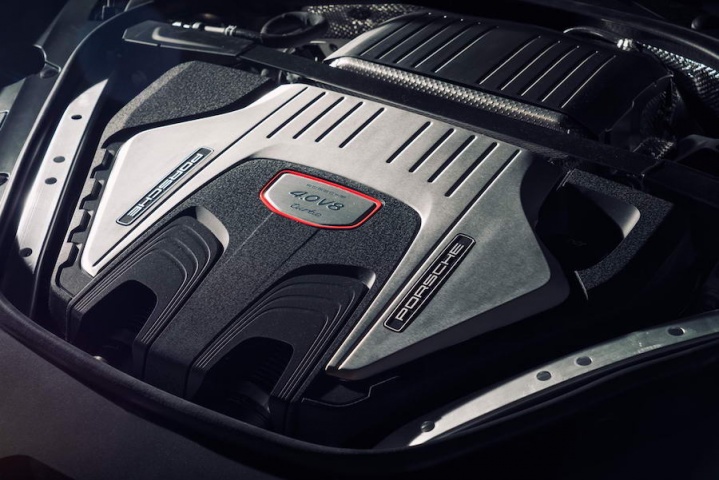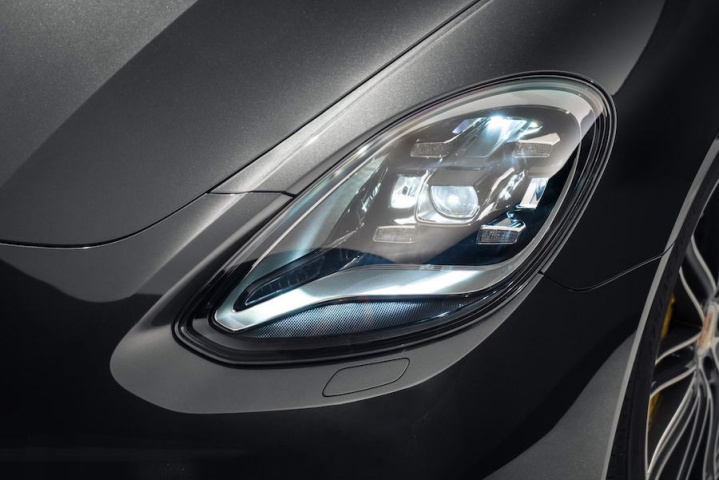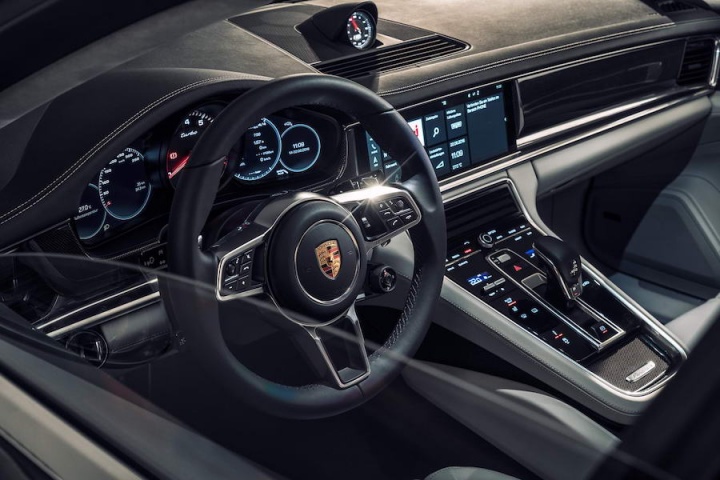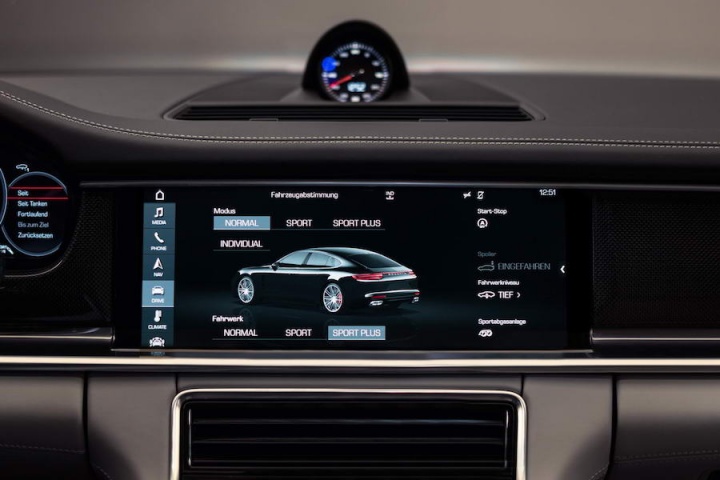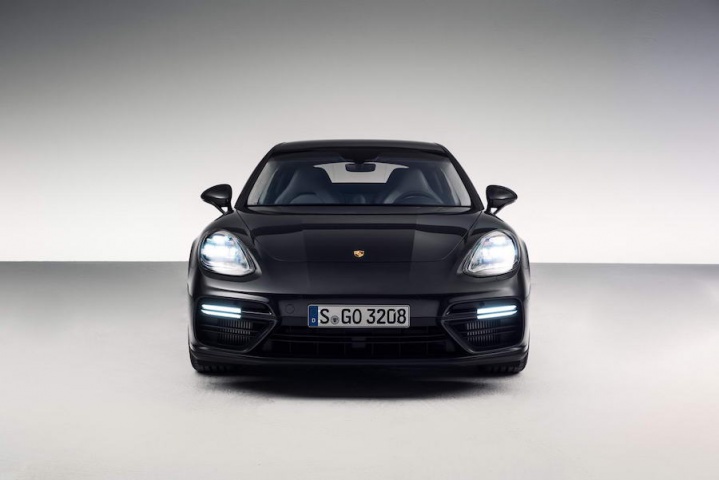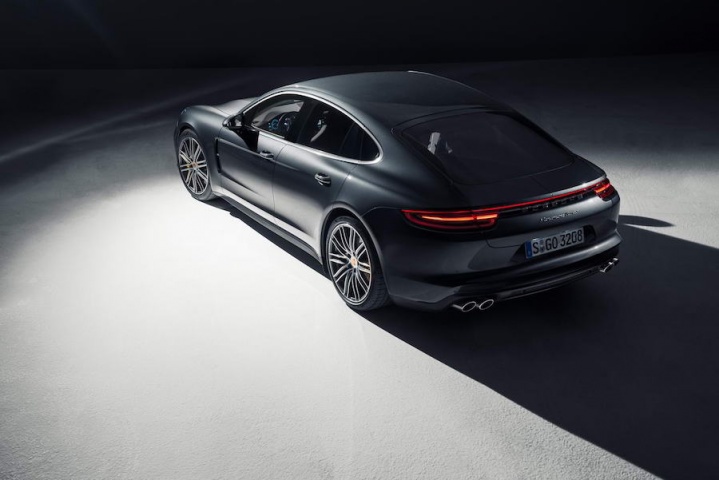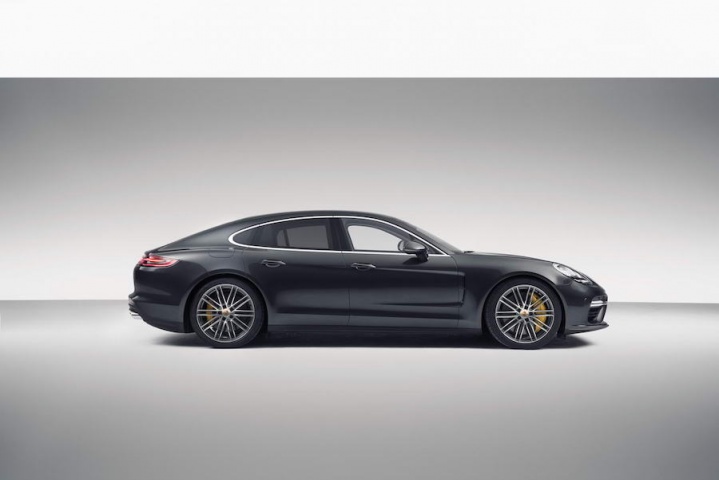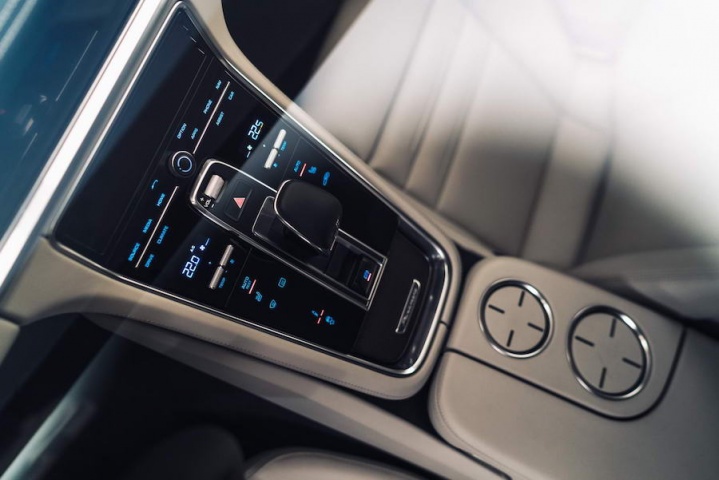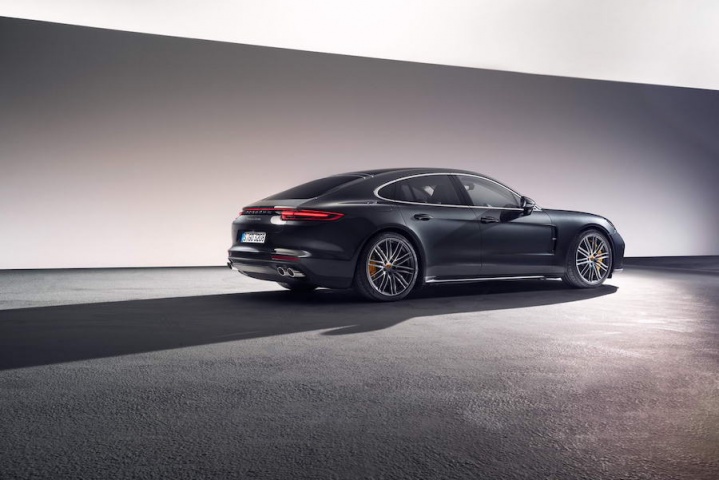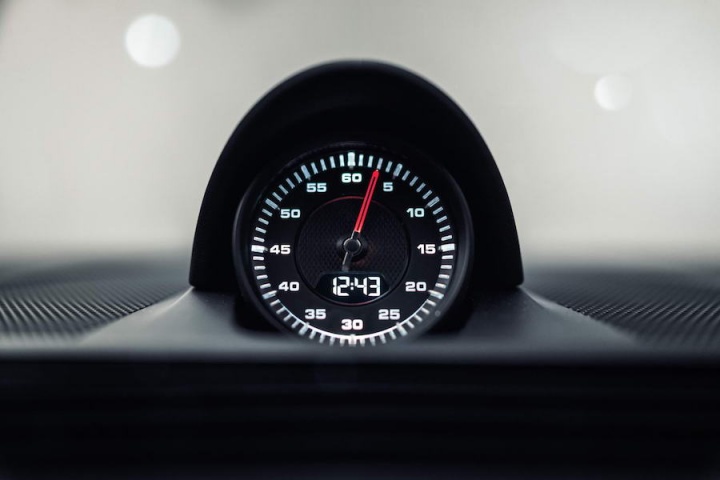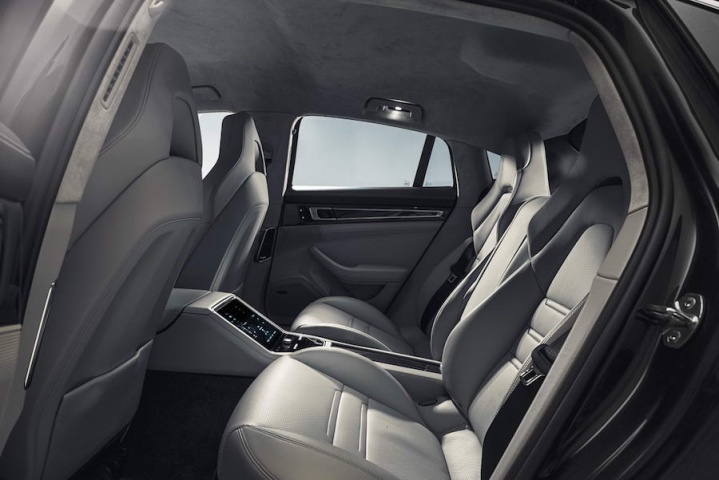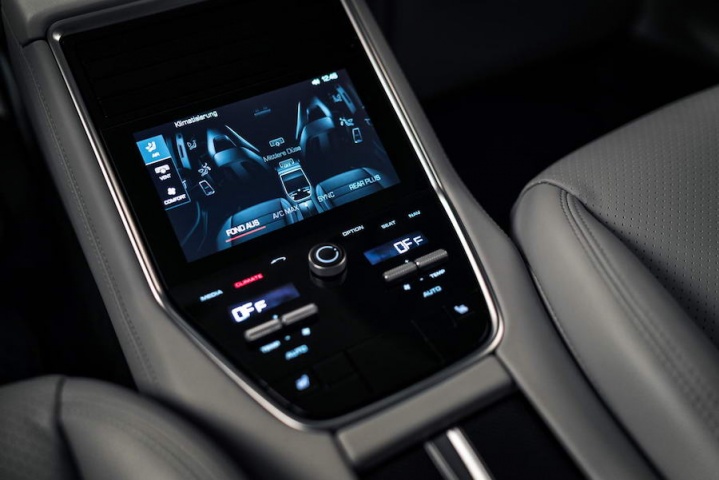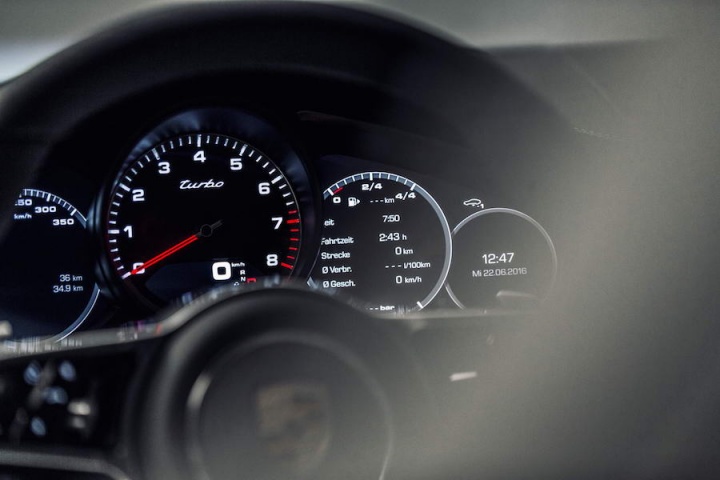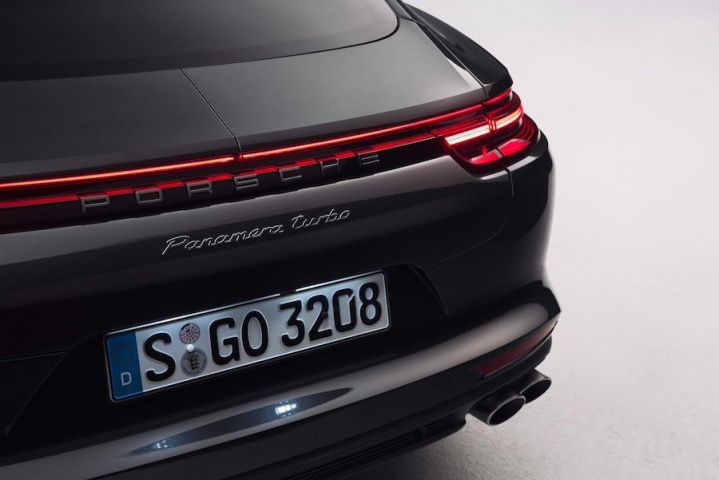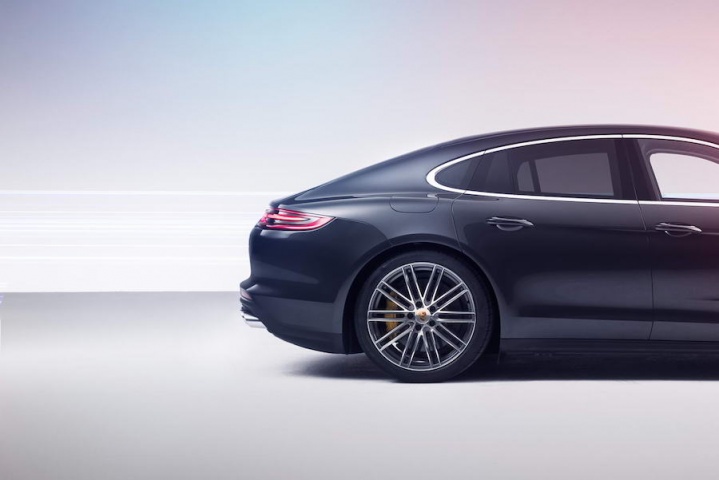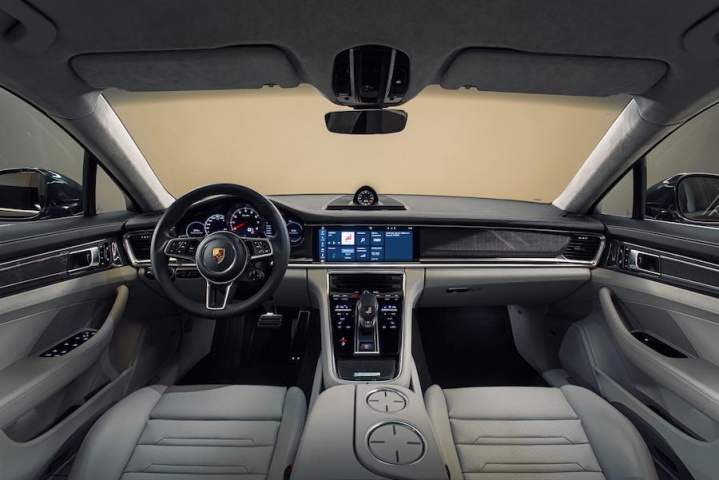What's the news?
This is the all-new, second-generation Porsche Panamera; we've got all the details and the first full look at its exterior styling. Three models - the 4S, 4S Diesel and the Turbo - will form the all-turbocharged launch line-up due out at the end of this year.
Exterior
Like a lot of Porsche's design over the decades, the changes to the Panamera are evolutionary rather than revolutionary, but the overall effect is most pleasing. It's still not the most delicate shape in the world yet we would say it's the most handsome iteration of the Porsche saloon so far. It's a few millimetres longer, wider and taller than before, but the roof above the rear passenger compartment is 20mm lower than previously in order to make the Panamera look ever more like a stretched 911. Porsche says it has retained rear headroom despite this move and it has also increased the wheelbase by 30mm to 2,950mm in total.
Particular exterior details to note include the large air intakes in the front bumper, the LED headlights with the marque's signature four-point LED daytime running lamps, the contoured bonnet, the flowing glasshouse, those distinctive rear light clusters that have an interconnecting LED strip and 'flared lip wheel arches'. Beneath these last items sit either 19-inch (4S and 4S Diesel), 20-inch (Turbo) or optional 21-inch alloy wheels. And if a new Panamera owner de-badges their car then look at the exhausts - round tailpipes mean it's a 4S or 4S Diesel, trapezoidal trims signify the Turbo.
Interior
Again, a gentle overhaul of the previous-generation car's cabin is characterised by black panel surfaces for the major controls, specifically running either side of the gear lever. This, says Porsche, means 'classic hard keys and conventional instruments have been reduced significantly'. The Stuttgart company has called this digitalisation of the driver's area the Porsche Advanced Cockpit, which is capped off by a 12.3-inch touchscreen in the centre top of the dash that is symbolic of the next-generation Porsche Communication Management (PCM) system. Even rear-seat passengers get a touchscreen of their own if the (optional) four-zone climate control system is specified.
Talking of equipment, Porsche says cost-extra toys will include a panoramic tilt roof, massage seats, ambient lighting and a Burmester high-end 3D sound system. The Panamera is also claimed to be practical, featuring a 40:20:40 split rear bench seat, with boot capacity starting at 495 litres and rising to 1,304 litres.
Mechanicals
Three new biturbo direct injection engines are offered for the Panamera Mk2. The petrol models are a 2.9-litre V6 in the 4S, generating 440hp (up 20hp on the old model) at 5,650rpm and 550Nm (up 30Nm) at 1,750- to 5,500rpm. The Turbo gets a 4.0-litre V8 with a monster 550hp (+30hp on the old model) and 770Nm (+70Nm), churned out at 5,750rpm and from 1,960- to 4,500rpm respectively. Given all Panameras are now four-wheel drive with eight-speed PDK gearboxes, that means startling performance: the 4S does 0-100km/h in 4.4 seconds (4.2 seconds with Sport Chrono package) and goes on to 289km/h, while the range-topping Turbo clocks 3.8 seconds (3.6 seconds Sport Chrono) and 306km/h. For the green data, the Turbo can achieve bests of 9.3 litres/100km (30.4mpg) and 212g/km CO2, while the 4S records 8.1 litres/100km (34.9mpg) and 184g/km.
Over on the diesel front, a 4.0-litre V8 tops the torque charts, squeezing out a colossal 850Nm from just 1,000- to 3,250rpm. It generates 422hp at 3,500rpm and can do 0-100km/h in 4.5 seconds (4.3 seconds Sport Chrono) with a top whack of 285km/h - making it three things: it's the first four-wheel drive diesel Panamera; it's the most powerful diesel engine yet implemented in a Porsche production car; and it's the fastest production vehicle with a diesel motor. All that, and it'll do 6.7 litres/100km (42.2mpg) and emit just 176g/km CO2.
A final word on the engines before we move on to the chassis - while they are all twin-turbos with a 'hot inside V' configuration of their turbochargers, the 4S Diesel is the only model with sequential turbocharging; the two petrol models' turbos work in tandem all the time. So, with that in mind, keeping two tonnes of fast-moving big Porsche saloon on the tarmac involves some serious chassis tech, with the Panamera benefitting from optional adaptive air suspension, Porsche Active Suspension Management (PASM) electronic damper control, Porsche Dynamic Chassis Control Sport (PDCC Sport) including Porsche Torque Vectoring Plus (PTV Plus) and active roll stabilisation, plus a new electromechanical steering system. Rear-axle steering, adapted from the 918 Spyder and 911 Turbo and larger brakes complete the Panamera package.
Anything else?
Due to go on sale in its native Germany in November, prices and final specifications for Ireland are yet to be confirmed. So we'll leave you with this nugget: the mighty 4.0-litre biturbo V8 in the 550hp Turbo Panamera can run as a four-cylinder motor under light throttle loads, supposedly improving fuel economy by up to 30 per cent.
Read our review of the new Porsche Panamera from the passenger seat.

